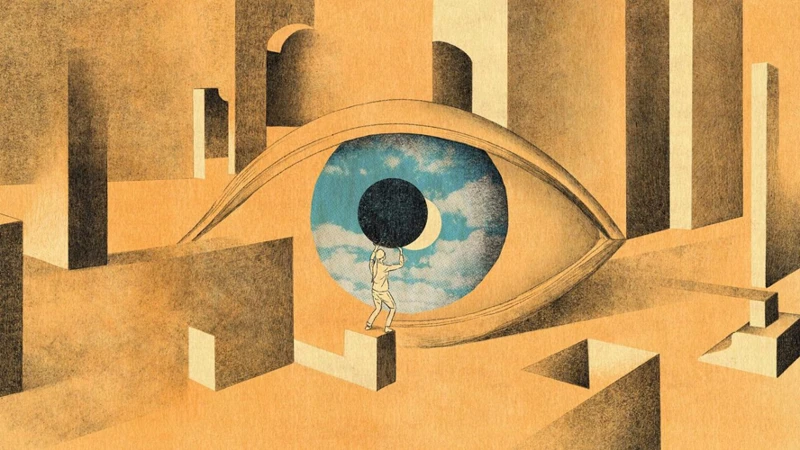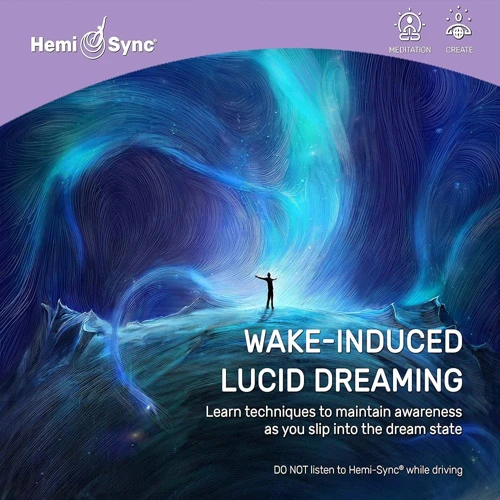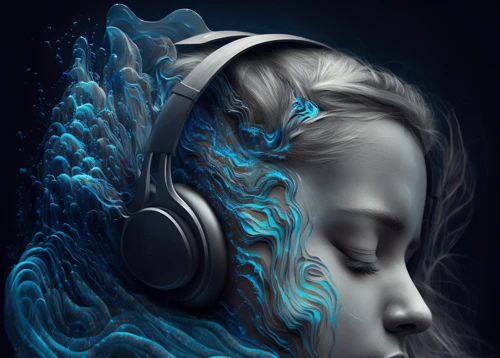Music has a profound impact on our emotions, transporting us to different realms and igniting our imagination. But did you know that music can also play a crucial role in enhancing our dream experiences? In the realm of lucid dreaming, where the dreamer becomes aware that they are dreaming and can actively participate in the dream, music can serve as a powerful tool to shape, amplify, and explore the dream world. By carefully selecting and integrating music into our dream practice, we can unlock new dimensions of consciousness and embark on extraordinary dream adventures. In this article, we will delve into the fascinating connection between music and dreams, explore how music can enhance lucid dreaming, and provide you with practical tips on how to use music to enrich your dream journeys. Harness the power of music and open the doors to a world where dreams and reality intertwine.
The Connection Between Music and Dreams

The connection between music and dreams is a fascinating and complex one. Music has long been known for its ability to evoke powerful emotions and transport us to different mental and emotional states. When we sleep, our minds enter the realm of dreams, a mysterious landscape where anything is possible. Dreams have their own unique symbolism and meaning, and they can be influenced by a variety of factors, including external stimuli such as music. Research has shown that music can have a profound impact on dream content, influencing the themes, emotions, and imagery that arise during sleep. Studies have found that individuals who listen to specific types of music before bed often report dreaming about related topics or experiencing intensified dream experiences. This phenomenon can be attributed to the deep connection between our subconscious mind, emotions, and the power of music. To learn more about the symbolism of music in dreams, the influence of music on dream content, and the therapeutic potential of music in dreams, check out our in-depth articles on The Symbolism of Music in Dreams and Music Therapy in Dreams. Discover how music can penetrate the depths of our unconscious, shape our dream experiences, and unlock the hidden realms of our imagination.
The Power of Music in Shaping Dreams
The power of music in shaping dreams is an extraordinary phenomenon that highlights the profound impact of auditory stimuli on our dream experiences. Music has the ability to evoke strong emotions and create a multisensory experience that can transcend the boundaries of our waking reality. When we incorporate music into our dream practice, whether through intentional listening before sleep or during the dream itself, we tap into the potential for music to shape the narratives, emotions, and imagery of our dreams. Research has shown that different types of music can elicit specific emotional responses and alter the overall atmosphere of our dreams. For example, listening to uplifting and energetic music before sleep may lead to more positive and vibrant dreamscapes, while calming and soothing music can create a serene and peaceful dream environment. This connection between music and dream content is a fascinating exploration that continues to inspire scientists and dream enthusiasts alike. To dive deeper into how music influences dream content and the intricate relationship between melodies and the dream world, take a look at our comprehensive article on The Influence of Music on Dream Content. Expand your understanding of the profound power of music in shaping our dreamscapes and embark on a journey where music becomes the conductor of our nocturnal adventures.
The Role of Music in Lucid Dreaming
When it comes to lucid dreaming, music plays a crucial role in enhancing the overall experience. Lucid dreaming is a state in which the dreamer becomes aware that they are dreaming and can actively participate in the dream. Music serves as a powerful catalyst in this process, helping to deepen the level of lucidity and control within the dream. One of the primary roles of music in lucid dreaming is to act as a trigger or cue for the dreamer to become aware of their dream state. By incorporating specific musical cues into their dreamscape, such as a particular song or melody, individuals can train their subconscious mind to recognize these cues and realize that they are dreaming. Additionally, music has the ability to amplify emotions and sensations within the dream. By choosing music that elicits specific emotions or moods, dreamers can enhance the intensity and vividness of their dream experiences. For example, upbeat and energetic music can infuse dreams with a sense of excitement and adventure, while calming and soothing music can promote relaxation and tranquility within the dream. By harnessing the power of music, dreamers can tap into a whole new level of lucidity, creativity, and exploration in their dream world.
Choosing the Right Music for Lucid Dreaming

When it comes to choosing the right music for lucid dreaming, it’s important to consider the specific qualities that can enhance your dream experiences. Relaxing and calming music is a popular choice for promoting a peaceful and serene state of mind before sleep. This type of music, such as soft instrumental tunes or gentle nature sounds, can help you enter a relaxed and receptive state, making it easier to transition into the dream world. Ambient and atmospheric music can also be highly effective for lucid dreaming. These types of music create a dreamy and ethereal atmosphere, evoking a sense of mystery and exploration. They can help you dive deeper into your dreams and enhance the overall dream experience. Another technique widely used in lucid dreaming is incorporating binaural beats and isochronic tones. These are specially designed audio frequencies that can synchronize brainwaves, inducing states of relaxation, focus, or even enhance cognitive abilities. By listening to binaural beats or isochronic tones during your dream practice, you can stimulate specific brainwave patterns associated with lucid dreaming, increasing your chances of becoming aware within your dreams. Experiment with different genres and styles of music and pay attention to how they affect your dream experiences. Remember, the key is to choose music that resonates with you personally and creates a conducive environment for lucid dreaming.
Relaxing and Calming Music
When it comes to enhancing lucid dreaming, the choice of music is crucial. One genre of music that can greatly support the induction of lucid dreams is relaxing and calming music. The soothing melodies, gentle rhythms, and tranquil harmonies of this type of music help create a serene and peaceful atmosphere conducive to deep relaxation and a peaceful state of mind. This music can help to reduce stress, anxiety, and mental chatter, allowing you to enter a state of deep relaxation and prepare your mind for the dream world. By listening to relaxing and calming music before sleep or during a dream induction routine, you can create a serene audio environment that encourages the onset of lucid dreams. Additionally, this type of music can act as a relaxing anchor during the dream state, helping you maintain a sense of calmness and stability while exploring and engaging with the dream world. Soothing instrumentals, nature sounds, and ambient tracks are popular choices for relaxing and calming music. Experiment with different styles and find the melodies that resonate with you personally.
Ambient and Atmospheric Music
When it comes to enhancing lucid dreaming, ambient and atmospheric music can be incredibly powerful. This type of music is characterized by soothing, ethereal sounds and minimalistic compositions that create a relaxing and immersive atmosphere. Ambient music often features long, sustained tones, gentle melodies, and calming textures that can help induce a state of deep relaxation and tranquility. The dream-like quality of ambient and atmospheric music makes it an ideal choice for enhancing dreams and promoting a sense of serenity and peace. These atmospheric soundscapes can serve as a backdrop for your dream adventures, creating a soothing and otherworldly environment within your dreams. By listening to ambient music before sleep or even during your lucid dreaming practice, you can create a sonic environment that aligns with your desired dream experiences. This type of music can help transport you to different realms, evoke emotions, and enhance the overall vividness and atmosphere of your dreams. Experiment with different ambient and atmospheric music genres, such as ambient electronic, new age, or space music, to find the soundscapes that resonate with you and enhance your lucid dreaming journeys. Let the gentle waves of ambient music guide you into the realm of dreams and unlock new dimensions of consciousness.
Binaural Beats and Isochronic Tones
When exploring ways to enhance lucid dreaming through music, one technique that deserves special attention is the use of binaural beats and isochronic tones. Binaural beats are created by playing two slightly different frequencies in each ear, resulting in the brain perceiving a third frequency. This phenomenon can help synchronize brainwaves and induce specific mental states, such as relaxation or concentration. Isochronic tones, on the other hand, are distinct pulses of sound that can also influence brainwave activity. These two auditory stimuli have gained popularity among lucid dreamers due to their potential to stimulate brainwave patterns associated with heightened awareness and dream exploration. By listening to recordings or music embedded with carefully designed binaural beats or isochronic tones, dreamers can create a soundscape that supports their lucid dreaming practice. These beats and tones can help relax the mind and body before sleep, promote a focused and alert mental state during the hypnagogic stage, and even facilitate the transition into a lucid dream. It is important to note that individual experiences may vary, and it may take some experimentation to find the right frequencies and tones that resonate with you. Additionally, it is recommended to use high-quality headphones for the best binaural or isochronic effect. When incorporating binaural beats and isochronic tones into your lucid dreaming routine, be open to the possibilities they offer, and embrace the potential for deeper dream experiences and expanded consciousness.
Creating a Dream Soundtrack

Creating a dream soundtrack is a powerful technique that can enhance your lucid dreaming experience. By carefully selecting music that resonates with your desired dream experience, you can create a sonic landscape that influences the themes, emotions, and atmosphere of your dreams. When choosing music for your dream soundtrack, consider the mood and tone you want to achieve. Relaxing and calming music, such as classical music or ambient tunes, can help create a serene and tranquil dream environment. These types of music help relax your mind and promote a state of relaxation conducive to lucid dreaming.
Additionally, ambient and atmospheric music, with its ethereal and otherworldly qualities, can transport you to fantastical dream realms. Look for instrumental tracks that evoke a sense of mystery, wonder, or adventure. These atmospheric sounds can help stimulate your imagination and inspire vivid dreamscapes.
One popular technique for incorporating music into lucid dreaming practice is the use of binaural beats and isochronic tones. These are specially engineered sound frequencies that can synchronize brainwaves and induce specific mental states. Binaural beats are created by presenting two slightly different frequencies to each ear, while isochronic tones involve a single frequency pulsating at a specific rate. These technologies have been reported to help induce lucid dreams by altering brainwave patterns. Consider exploring binaural beats or isochronic tones designed specifically for lucid dreaming to enhance your dream soundtrack.
Experiment with different genres, instruments, and soundscapes to find what resonates with you personally. Create a playlist that includes a variety of music that aligns with different dream scenarios and themes you wish to explore. This dream soundtrack will serve as a sonic guide and companion as you navigate the realms of your lucid dreams.
Selecting Music that Resonates with Your Desired Dream Experience
When it comes to selecting music for your lucid dreaming practice, it is important to choose songs that resonate with your desired dream experience. Different genres, rhythms, and melodies can evoke specific emotions and create distinct dream atmospheres. Start by considering the mood or theme you want to explore in your dreams. If you are seeking relaxation and tranquility, opt for ambient and atmospheric music with gentle sounds and soothing melodies. This type of music can help create a serene and peaceful dream environment. On the other hand, if you are looking for excitement and adventure in your dreams, consider choosing music with energetic beats and uplifting melodies. This can stimulate your mind and enhance the sense of thrill and exploration in your dream world. Additionally, you may want to select music that aligns with specific activities or scenarios you want to engage in during your lucid dreams. For example, if you plan to fly in your dreams, choose music that gives a sense of freedom and weightlessness. If you want to explore underwater realms, opt for music that evokes the sensation of being submerged in water. By selecting music that resonates with your desired dream experiences, you can enhance the overall immersion and emotional impact of your lucid dreams.
Designing a Playlist for Different Dream Scenarios
When it comes to designing a playlist for different dream scenarios, it’s important to consider the specific goals or experiences you want to explore in your lucid dreams. Each dream scenario has its own unique atmosphere, mood, and energy, and by carefully selecting the right music, you can enhance the themes and intentions of your dreams. Here are a few suggestions for designing a playlist based on different dream scenarios:
1. Adventure and Exploration: If you’re looking to embark on exciting adventures in your dreams, choose music that has an epic and adventurous feel. Think of movie soundtracks or instrumental pieces that evoke a sense of exploration, like orchestral compositions or uplifting electronic tracks. The key is to select music that enhances your imagination and propels you into new and thrilling dream landscapes.
2. Relaxation and Tranquility: For dreams centered around relaxation and tranquility, opt for soothing and calming music. Soft melodies, ambient sounds, or gentle nature sounds can create a serene and peaceful dream atmosphere. Consider incorporating music with slow tempos and warm tones to induce a state of deep relaxation and tranquility.
3. Empowerment and Confidence: If you want to enhance feelings of empowerment and confidence in your dreams, choose energetic and uplifting music. Look for tracks with strong beats, inspiring lyrics, or motivational messages. These types of songs can infuse your dreams with a sense of strength and self-assurance, empowering you to take charge of your dream experiences.
4. Fantasy and Magic: To create dreams that are filled with wonder and magic, select music that has a whimsical and ethereal quality. Fairy-tale soundtracks, mystical instrumental pieces, or even nature-inspired music can transport you to enchanting dreamscapes. Let the music evoke a sense of awe and mystery, igniting your imagination and inviting fantastical elements into your dreams.
Remember, the key is to choose music that resonates with your desired dream experience and enhances the emotions and themes you want to explore. Experiment with different genres, artists, and styles to find the perfect combination that reflects your dream aspirations. By carefully curating your dream playlist, you can set the stage for unforgettable and transformative dream journeys.
Integrating Music into Your Dream Induction Routine

Integrating music into your dream induction routine can significantly enhance your chances of having a lucid dream. To make the most of this practice, consider the following strategies:
1. Listening to Music Before Sleep: Set aside some time before bed to listen to relaxing and calming music. This helps create a soothing atmosphere conducive to a peaceful sleep and lucid dreaming. Choose music that resonates with you and evokes a sense of tranquility.
2. Using Music as an Anchoring Technique: Associate a particular song or instrumental track with the intention to become lucid in your dreams. Listen to this music throughout the day and before sleep, allowing it to become deeply ingrained in your mind. Eventually, the song will act as a trigger in your dreams, reminding you to become aware that you are dreaming.
3. Designing a Dream Playlist: Create a playlist specifically tailored to different dream scenarios or desired experiences. For example, if you want to have an adventure-filled dream, select energetic and upbeat music. If you seek relaxation and exploration, choose ambient and atmospheric music. Experiment with different genres and styles to find what works best for you.
4. Using Binaural Beats and Isochronic Tones: Consider incorporating binaural beats or isochronic tones into your music selection. These unique sound frequencies are believed to promote relaxation, stimulate brainwave patterns associated with lucid dreaming, and increase dream recall. Experiment with different frequencies to find the ones that resonate with you.
Remember to keep the volume at a comfortable level, as excessively loud music can disrupt sleep. Additionally, avoid stimulating or energetic music right before bed, as it may interfere with your ability to relax and fall asleep peacefully. By integrating music effectively into your dream induction routine, you can enhance your dream experiences and embark on extraordinary journeys within the realm of lucid dreaming.
Listening to Music Before Sleep
Listening to music before sleep can be a powerful tool in preparing your mind and body for the lucid dreaming experience. As you wind down for the night, selecting the right type of music can help to calm your mind, reduce stress, and create a peaceful environment conducive to entering the dream state. Choose relaxing and calming music that resonates with you and promotes a sense of tranquility. This could include gentle instrumental melodies, ambient sounds like nature or water, or soft vocal tunes. The key is to find music that helps you relax and let go of any distractions or worries from the day. Listening to this type of music before sleep can help to quiet your mind, release tension, and create a peaceful atmosphere that is conducive to lucid dreaming. Experiment with different genres and styles to find what works best for you. Additionally, it is important to create a consistent routine by regularly listening to music before sleep. This will train your mind to associate the music with the upcoming dream state and help to enhance your overall dream recall and dream lucidity. Make it a habit to incorporate music into your bedtime routine, and let the melodies guide you into a night of vivid dreams and lucid exploration.
Using Music as an Anchoring Technique
Using music as an anchoring technique in the practice of lucid dreaming can be a powerful tool to enhance and maintain awareness within dreams. An anchoring technique involves creating a strong association between a specific cue or trigger and the desired state of consciousness. In the context of lucid dreaming, music can serve as an anchor to remind us that we are dreaming and help us stay lucid within the dream world. One effective way to use music as an anchoring technique is to create a playlist of songs that have a distinct and recognizable sound or melody. Before going to sleep, listen to this playlist and focus on the intention of becoming lucid in your dreams. As you listen to the music repeatedly, it will create a mental association in your mind between the music and the state of lucidity. This association can then carry over into your dreams. When you hear a familiar song from the playlist within a dream, it can act as a trigger to alert you that you are dreaming, prompting you to become lucid and take control of the dream. Using music as an anchoring technique can be especially effective when combined with reality checks, as the music can serve as a reminder to perform reality checks within the dream. By integrating music into your lucid dreaming practice in this way, you can strengthen your ability to become aware within dreams and unlock incredible levels of lucidity and control.
Using Music to Maintain Lucidity in Dreams

Lucidity in dreams refers to the state of being aware that one is dreaming while still in the dream itself. It is a highly sought-after experience for those who practice lucid dreaming. Once achieved, maintaining lucidity can be a challenge, as the dream environment is often dynamic and can quickly shift. However, music can serve as a valuable tool in helping to sustain awareness and control within the dream. One effective technique is to use music as a reality check trigger. By associating a particular piece of music with the reality of waking life, you can train your mind to recognize the music within your dream as a signal to become lucid. Choose a distinct and recognizable tune that you can easily recall and associate with the waking state. During your waking hours, listen to this music regularly and visualize yourself becoming lucid in your dreams while hearing the tune. This practice will create a strong connection between the music and lucidity, making it more likely that you will recognize the music and trigger lucidity when it plays in your dreams. Another way to utilize music in lucid dreaming is to use it as a means to stabilize and enhance dream vividness. When you find yourself becoming lucid and beginning to lose clarity or focus in the dream, try summoning a simple musical instrument or using your voice to produce melodic sounds. Engaging with music in the dream can provide a focal point for your attention and help anchor you to the dream state. Additionally, the emotional and sensory stimulation of music can deepen your immersion in the dream environment, making it more vivid and memorable. Experiment with different types of music and observe how they affect the quality and intensity of your dream experiences. By using music as a tool to maintain lucidity in dreams, you can extend the duration of lucid states and explore the boundless possibilities of the dream world.
Using Music as a Reality Check Trigger
Using music as a reality check trigger can be a powerful technique to enhance lucidity in dreams. The concept behind reality checks is to question the nature of one’s reality in order to determine if one is dreaming or awake. By incorporating music into this practice, you can leverage the power of auditory cues to increase your chances of becoming lucid. Here are a few techniques to use music as a reality check trigger:
1. Music Alarm: Set an alarm with a specific song or melody that you find meaningful or memorable. Throughout the day, periodically play this song to remind yourself to question your reality. When you hear the song in your dreams, it can serve as a trigger to prompt a reality check.
2. Music Association: Choose a specific song that you associate with lucidity or being in a dream state. Whenever you encounter this song in your waking life, take a moment to perform a reality check. With consistent practice, this association will start to carry over into your dreams, alerting you to the possibility of being in a dream state.
3. Lyrics or Melody: Select a song with lyrics or a melody that revolves around the theme of dreams or questioning reality. Internalize the lyrics or melody and make it a habit to hum or sing it throughout the day. When you encounter the same lyrics or melody in a dream, it will act as a prompt to question the nature of your reality.
Remember, the key to using music as a reality check trigger is consistency and intention. Regularly engage with the chosen musical cues and genuinely question your reality each time you encounter them. Over time, these musical triggers will become ingrained in your psyche and increase your chances of achieving lucidity in your dreams. So, let the power of music guide you into the realm of heightened awareness and unlimited possibilities.
Using Music to Stabilize and Enhance Dream Vividity
When it comes to lucid dreaming, one of the challenges dreamers often face is maintaining stability and enhancing the vividness of their dream experiences. This is where music can play a crucial role. By strategically incorporating music into your lucid dreaming practice, you can stabilize your dreams and make them more vibrant and lifelike. One effective way to use music for stabilization is to choose a specific song or melody that acts as a reality check trigger. This means that whenever you hear that particular piece of music in your dreams, it serves as a reminder to question your reality and become lucid. To enhance dream vividness, consider selecting music that creates a powerful emotional response. Research has shown that music with strong emotional impact can increase the clarity and intensity of dream imagery. Additionally, incorporating music with a faster tempo or rhythmic patterns can help energize your dreams and make them more dynamic. Experiment with different genres and styles of music to find what resonates with you and enhances the overall vividness of your dream experiences. Remember, the key is to engage with the music within your dreamscape, allowing it to become a part of the dream narrative and amplifying the sensory experience. Harness the power of music to stabilize and supercharge your lucid dreams and unlock new realms of vividness and adventure.
Recalling Dreams and Reflecting through Music
Recalling dreams and reflecting through music can be a powerful practice for exploring the depths of our dream experiences and gaining insights into our subconscious mind. Upon waking, our dreams may seem elusive, fading away rapidly as we transition into wakefulness. However, by using music as a tool for reflection and journaling, we can enhance our ability to recall and analyze our dreams. One technique is to keep a dream journal and play soft, atmospheric music while recounting the details of our dreams. The gentle melodies and ambient sounds can help create a soothing and immersive atmosphere, making it easier to recall and capture the essence of our dreams. As we write down our dream narratives, the music acts as a bridge, connecting us to the emotions and imagery of our dream experiences. Additionally, after recording our dreams, we can further explore and reflect on their meaning through the power of music. By selecting songs or compositions that resonate with the overall mood or symbolism of our dreams, we can enter a meditative state and revisit the dream landscape. This practice can allow us to gain deeper insight and understanding of the messages and themes explored in our dreams. By combining the creative expression of music with the introspective practice of dream journaling, we can unlock a wealth of self-awareness and tap into the hidden wisdom that resides within our sleep-induced fantasies.
Journaling and Analyzing Dreams with Music
Journaling and analyzing dreams with music can be a powerful practice to deepen your understanding of your dream experiences and uncover hidden insights. When you wake up from a vivid dream, take a few moments to immerse yourself in calming music that aligns with the emotions and atmosphere of your dream. Allow the music to evoke the memory and sensations of the dream, and then begin writing in your dream journal. As you replay the dream in your mind, let the music guide your recollection, helping you remember details and emotions that might have faded with waking consciousness. Pay attention to how the music resonates with different aspects of the dream, and explore the connections between the lyrics, melodies, or instrumentals and the dream content. This process of combining music and journaling can unlock deeper meanings and symbolism within your dreams. After writing down your initial impressions, take some time to analyze the dream with the aid of the music. Reflect on the emotions it evoked, the recurring themes or symbols, and the overall atmosphere of the dream. Consider how the music influenced your experience and shaped the dream narrative. This practice can help you gain valuable insights into your subconscious mind, uncover patterns in your dreams, and facilitate personal growth and self-discovery. Explore the fascinating relationship between music and the realm of dreams through journaling and analysis, and uncover the hidden messages that lie within your nighttime adventures.
Revisiting Dreams through Music and Meditation
Revisiting dreams through music and meditation is a powerful practice that allows us to delve deeper into the rich landscape of our dream experiences. After waking up from a vivid dream, we can use music and meditation to reconnect with and explore the dream’s themes, emotions, and imagery. To begin, find a quiet and comfortable space where you can relax and focus. Choose a piece of music that resonates with the essence of the dream you wish to revisit. Close your eyes, take a few deep breaths, and allow the music to transport you back into the dream world. As the music plays, let the memories and sensations of the dream wash over you. Notice any new details or insights that may arise. Use meditation techniques such as mindfulness and visualization to immerse yourself in the dream’s environment and engage with its symbolism. You can also journal or draw to capture your experiences and deepen your understanding of the dream’s messages. This practice of revisiting dreams through music and meditation not only enhances our dream recall but also strengthens our dream awareness and ability to lucid dream. It allows us to dive deeper into the meanings and lessons that our dreams hold, and facilitates personal growth and self-discovery. So, the next time you wake up from a fascinating dream, don’t let it fade away. Harness the power of music and meditation to revisit and explore your dreams, unlocking the hidden treasures of your subconscious mind.
Conclusion
In conclusion, the power of music in enhancing lucid dreaming is undeniable. Music has the ability to shape our dreams, create a calming and conducive environment for dream exploration, and even serve as a tool for maintaining lucidity within dreams. By carefully selecting the right music, designing dream soundtracks, and integrating music into our dream induction routines, we can optimize our lucid dreaming experiences. Music can also be used as a trigger for reality checks and a means to stabilize and enhance dream vividness. Furthermore, music can aid in recalling and reflecting on our dreams, providing a unique avenue for journaling, analyzing, and revisiting dream experiences. Whether you are a seasoned lucid dreamer or just starting on your dream journey, incorporating music into your practice can open up new possibilities and enrich your dream adventures. So, put on your headphones, let the melodies guide you, and embark on extraordinary dream explorations with the power of music at your side.
Frequently Asked Questions
Why does music have such a strong impact on our emotions?
Music has the power to evoke emotions due to its ability to stimulate various regions of the brain, including the limbic system, which is responsible for processing emotions. The combination of melody, rhythm, and lyrics can trigger memories, elicit feelings of joy, sadness, or excitement, and create a deep emotional connection.
How does music influence the content of our dreams?
Music can influence the content of our dreams by setting a specific mood or theme. If we listen to calming and peaceful music before sleep, we are more likely to have dreams that reflect those emotions. Similarly, intense or upbeat music can lead to more energetic and vivid dream experiences.
Can listening to music before bed improve dream recall?
Yes, listening to music before bed can potentially improve dream recall. Music has the ability to enhance memory and facilitate the retention of dream experiences. By immersing ourselves in soothing melodies or dream-inducing soundscapes, we may have a better chance of remembering and recalling our dreams upon waking up.
What types of music are best for inducing lucid dreams?
There isn’t a one-size-fits-all answer to this question, as everyone’s preferences and responses to music can vary. However, ambient music, binaural beats, and calming instrumental tracks are often recommended for inducing lucid dreams. Experimenting with different genres and styles can help you find what works best for you.
Can music be used to control the direction of a dream?
While music cannot directly control the direction of a dream, it can certainly influence the emotions, atmosphere, and overall experience within the dream. By choosing music that aligns with the desired dream scenario, you can create a more immersive and tailored dream experience.
How can music be used as an anchoring technique in lucid dreams?
Music can be used as an anchoring technique in lucid dreams by associating specific songs or melodies with the realization of being in a dream. By listening to the same music regularly during waking hours and incorporating it into your dreamscape, you can use it as a trigger to become lucid and take control of your dreams.
Do binaural beats and isochronic tones really enhance lucid dreaming?
There is anecdotal evidence suggesting that binaural beats and isochronic tones can enhance lucid dreaming experiences. These auditory stimuli are believed to influence brainwave patterns, potentially promoting relaxation, heightened awareness, and deeper immersion into the dream state. However, individual experiences may vary.
Can listening to music during sleep affect the quality of rest?
Listening to music during sleep can impact the quality of rest, as loud or disruptive music may interfere with the natural sleep cycle. However, gentle and soothing music played at a low volume can create a calming environment, helping some individuals relax and fall asleep more easily.
How can music help with dream journaling and analysis?
Music can aid in dream journaling and analysis by creating a conducive atmosphere for reflection. By listening to peaceful and introspective music while writing in your dream journal, you can tap into the emotions, symbols, and meanings behind your dreams, facilitating a deeper understanding of your unconscious mind.
Is it necessary to use headphones while listening to music for lucid dreaming?
Using headphones is not necessary but can enhance the experience of listening to music for lucid dreaming. Headphones provide a more immersive audio experience and can help block out external distractions, allowing you to fully immerse yourself in the dream-inducing soundscape.








